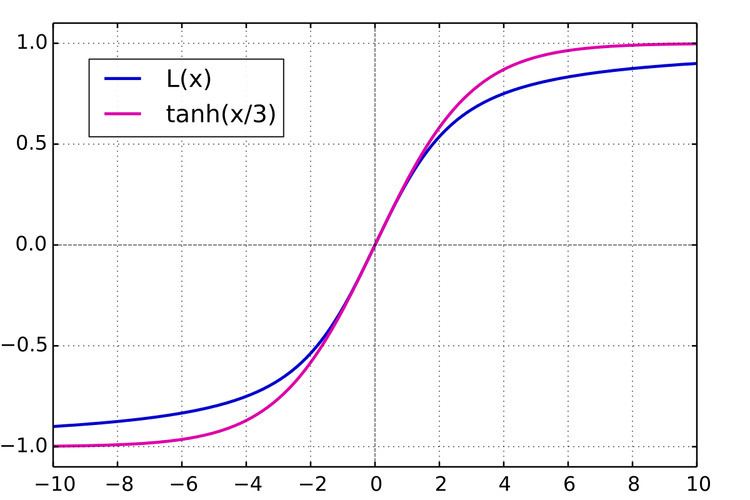 | ||
The Brillouin and Langevin functions are a pair of special functions that appear when studying an idealized paramagnetic material in statistical mechanics.
Contents
Brillouin function
The Brillouin function is a special function defined by the following equation:
The function is usually applied (see below) in the context where x is a real variable and J is a positive integer or half-integer. In this case, the function varies from -1 to 1, approaching +1 as
The function is best known for arising in the calculation of the magnetization of an ideal paramagnet. In particular, it describes the dependency of the magnetization
where
Note that in the SI system of units
Langevin function
In the classical limit, the moments can be continuously aligned in the field and
For small values of x, the Langevin function can be approximated by a truncation of its Taylor series:
An alternative better behaved approximation can be derived from the Lambert's continued fraction expansion of tanh(x):
For small enough x, both approximations are numerically better than a direct evaluation of the actual analytical expression, since the latter suffers from Loss of significance.
The inverse Langevin function L−1(x) is defined on the open interval (−1, 1). For small values of x, it can be approximated by a truncation of its Taylor series
and by the Padé approximant
Since this function has no closed form, it is useful to have approximations valid for arbitrary values of x. One popular approximation, valid on the whole range (−1, 1), has been published by A. Cohen:
This has a maximum relative error of 4.9% at the vicinity of x = ±0.8. Greater accuracy can be achieved by using the formula given by R. Jedynak:
valid for x ≥ 0. The maximal relative error for this approximation is 1.5% at the vicinity of x = 0.85. Even greater accuracy can be achieved by using the formula given by M. Kröger:
The maximal relative error for this approximation is less than 0.28%. More accurate approximation was reported by R. Petrosyan:
valid for x ≥ 0. The maximal relative error for the above formula is less than 0.18 %.
High-temperature limit
When
where
High-field limit
When
